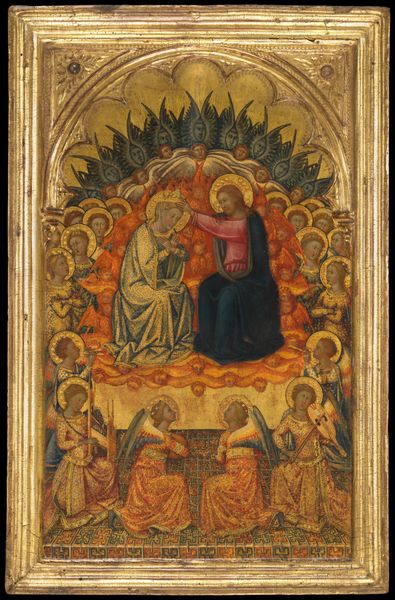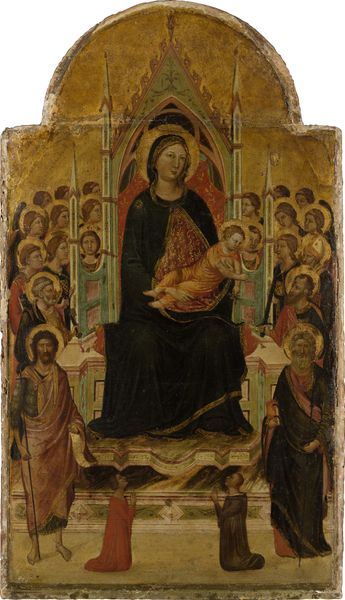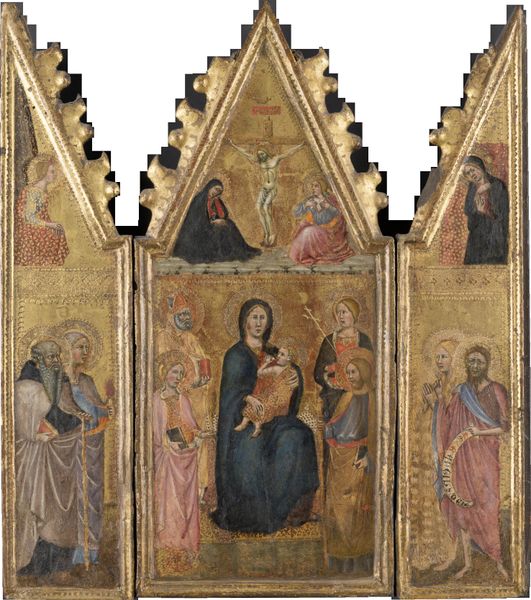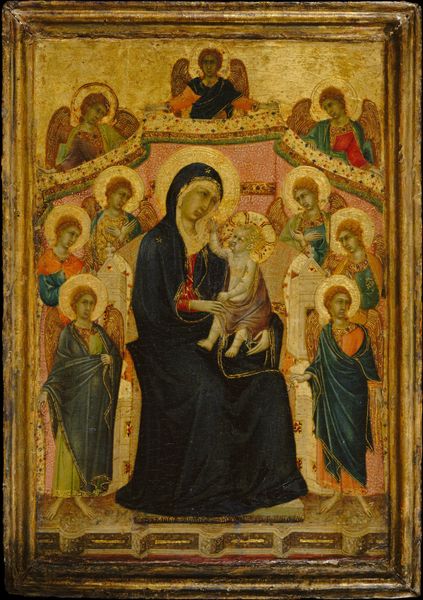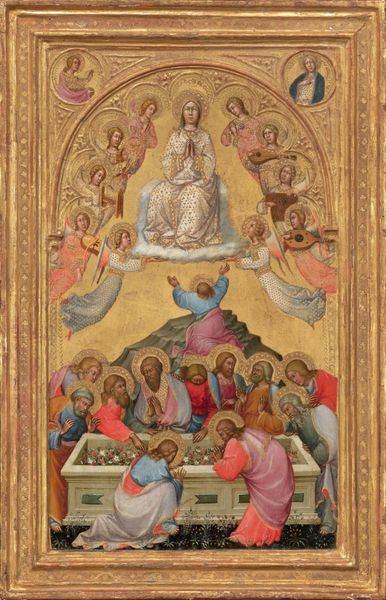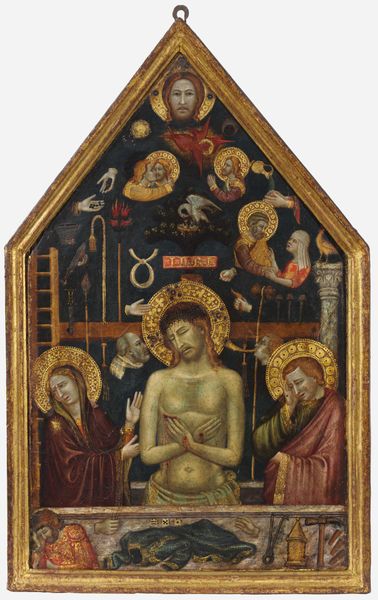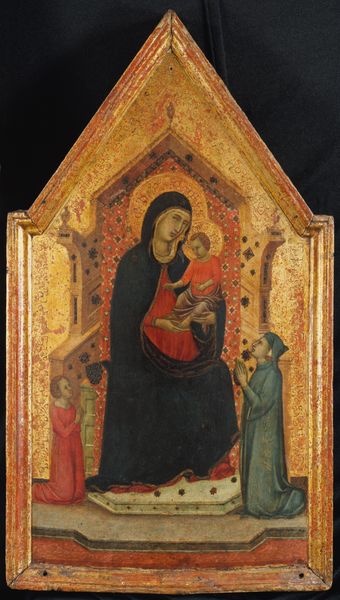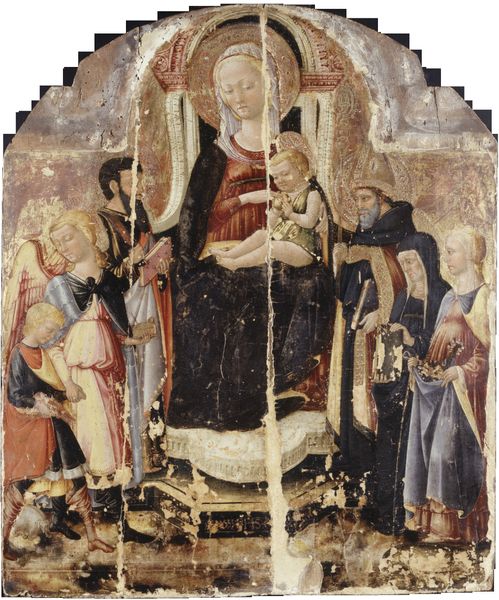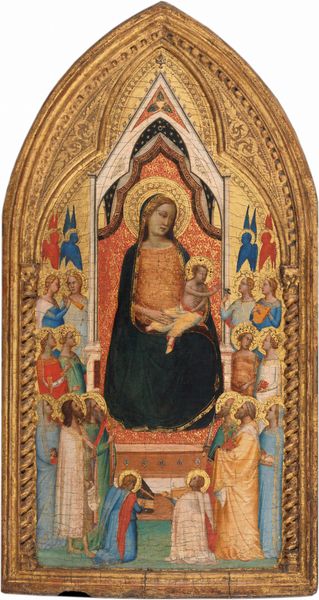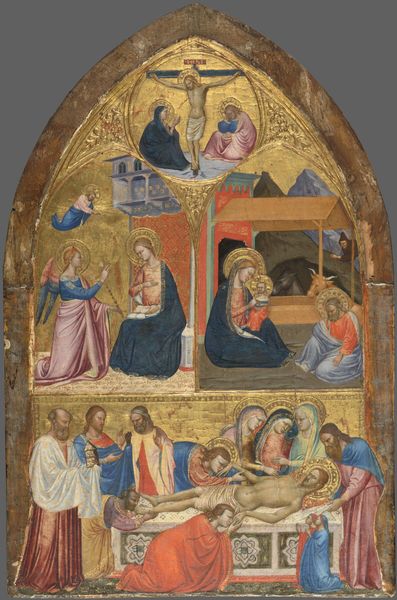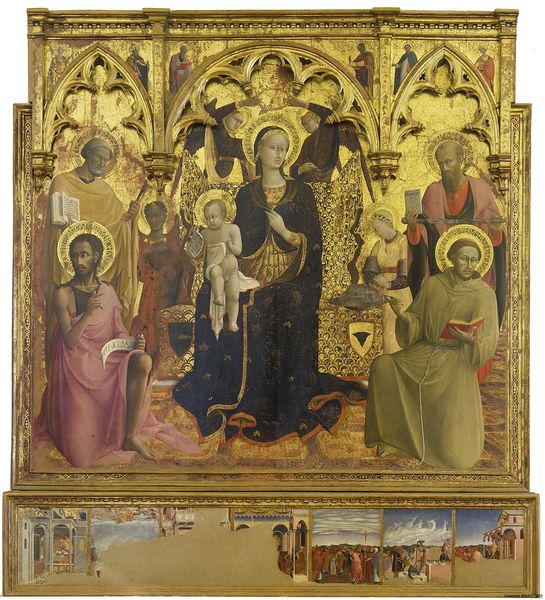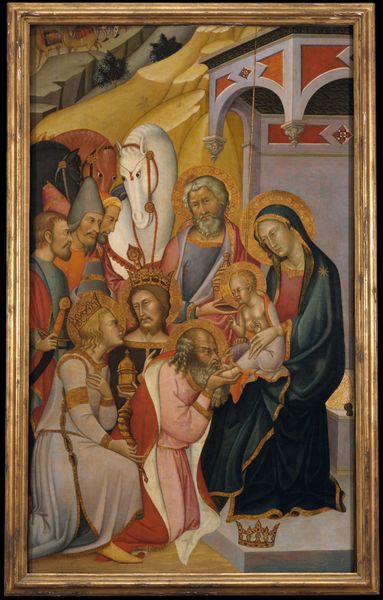
Madonna and Child Enthroned with Saint John the Evangelist, Saint Peter, Saint Agnes, Saint Catherine of Alexandria, Saint Lucy, an Unidentified Female Saint, Saint Paul, and Saint John the Baptist, with Eve and the Serpent; the Annunciation 1382 - 1393
0:00
0:00
tempera, painting
#
portrait
#
medieval
#
allegory
#
tempera
#
painting
#
figuration
#
madonna
#
oil painting
#
child
#
history-painting
#
international-gothic
#
watercolor
#
angel
Dimensions: Overall, with engaged frame, 34 1/4 x 23 1/4 in. (87 x 59.1 cm); painted surface 27 7/8 x 17 1/4 in. (70.8 x 43.8 cm)
Copyright: Public Domain
Editor: Here we have Paolo di Giovanni Fei's "Madonna and Child Enthroned with Saint John the Evangelist, Saint Peter, Saint Agnes…" dating from 1382 to 1393. It’s painted in tempera and currently held at the Met. It is strikingly opulent, and all that gold leaf makes me think of Byzantine icons. What can you tell me about this piece? Curator: Opulence, indeed! I see an object reflecting not just faith but also intense material labor and expense. Tempera wasn’t just "paint;" it demanded skilled craftspeople carefully layering pigments, egg yolk, and then gilding with gold leaf, all costly materials. Who benefitted from this investment of labor and resources? Editor: So you're suggesting it's as much about economics as devotion? I hadn't thought of it that way. Curator: Precisely! Look at the underdrawing—how was the design transferred to the panel? Was it pounced with charcoal dust, or incised? And what about the commission? Was it from a wealthy merchant family seeking status? This informs its cultural work just as much as any theological symbolism. Editor: I see your point. Thinking about the craft involved, it almost feels like looking at a very intricate piece of furniture or a tapestry as much as a "painting". Curator: And wasn't the application of the painting just another craft-making practice, not dissimilar to weaving or manuscript-making at the time? What might Fei's workshop have looked like? How did the organization of labor inform the image that was being produced? Editor: This changes my entire perspective. It seems like all those halos weren’t just divine, but symbols of economic power made through laborious work. Curator: Exactly! Examining the materials and processes reveals social relationships embedded within the image itself, challenging our modern conception of "art" and its hierarchies. We're seeing more than a religious icon; we’re witnessing a record of Late Medieval economy and craft production.
Comments
No comments
Be the first to comment and join the conversation on the ultimate creative platform.
